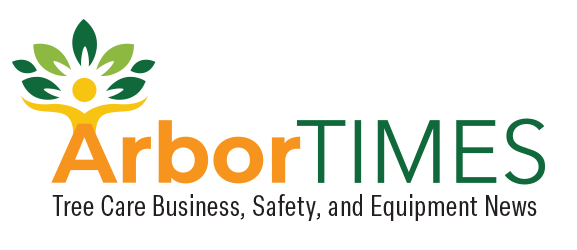Investing in Efficiency, Safety and Growth with Knuckle-boom Trucks
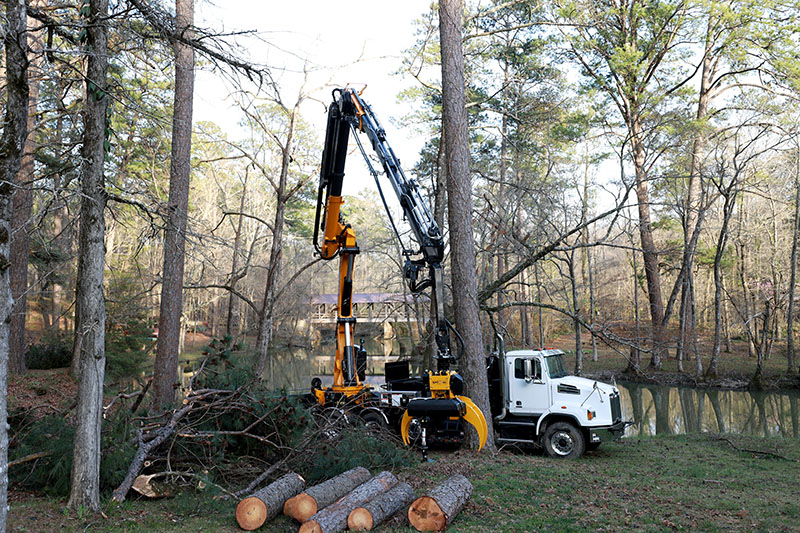
Like it or not, the future of operations lies in technology. Human error accounts for most job-site incidents and accidents, and tech can help reduce them. It’s not perfect—machines are unable to think critically the way humans can—but when used correctly, machines are safer and incredibly efficient.
With labor shortages continuing to affect tree care companies, deploying machinery is rapidly becoming a way for business owners to keep current employees busy and positively affect the bottom line. There are many machines on the market capable of boosting efficiency, but one of the rising stars is the knuckle-boom truck with a grapple-saw head.
A knuckle-boom offers a lot of versatility for tree care businesses. When a company regularly books tree removals—think: multiple trees per week—it’s time to consider adding one of these powerful machines to the fleet. This guide leverages industry experts to introduce the considerations and benefits of owning a knuckle-boom truck.
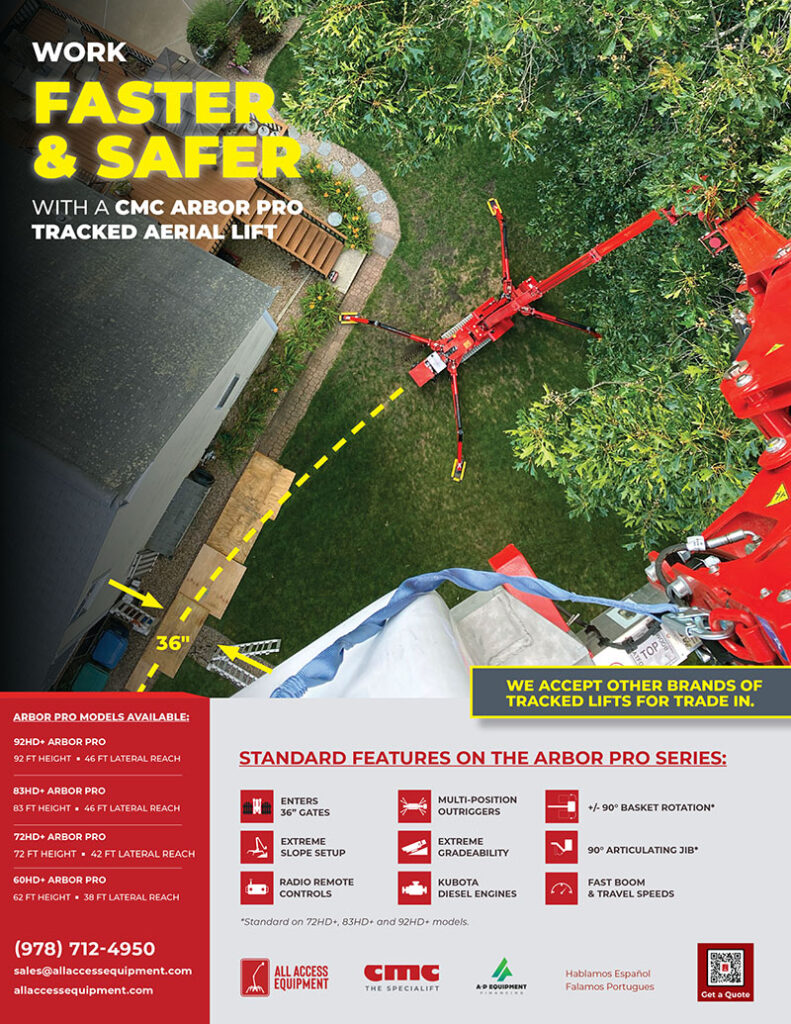
Prioritizing safety
Knuckle-boom trucks are a significant investment that offers much more than enhanced productivity and positive impact on the bottom line.
These machines feature sophisticated technology designed to mimic intelligence. For example, the Albach Fällbach is designed with, “Monitored safety functions, safety load-holding valves and lift- and load-moment limitation, which automatically reduces the working speed in the limit range or prevents load moment-increasing movements,” says Daniel Frühholz, a development and construction engineer for Albach, a producer of self-propelled chippers, felling cranes and felling grapples for excavator attachments based in Germany. “Additionally, the Fällbach is equipped with a camera system in the felling unit to support safe gripping of trunks and branches.” Technology is not a replacement for good training and common sense, but it is designed to prevent a small mistake from becoming a big one. When these safety-monitoring systems kick in, the operator has time to make necessary adjustments before moving forward with the task at hand.
Technology is not a replacement for good training and common sense, but it is designed to prevent a small mistake from becoming a big one. When these safety-monitoring systems kick in, the operator has time to make necessary adjustments before moving forward with the task at hand.
These machines can keep crew members safely on the ground, allowing the machine to take over the responsibilities of working aloft. “When you can keep a person on the ground and still get the job done, you have the safest work environment possible,” says Andy Price, tree care division market manager for Altec, a provider of products and services for utilities, telecommunications and contractor markets headquartered in Birmingham, AL. “Adding to that, with remote-control operation, you’re able to pull all staff 30 to 40 yards away, so even if a tree falls or a limb drops, no one is in the drop zone.” The ability to pull all staff out of the drop zone not only improves safety but also offers the opportunity for them to focus on other tasks until the tree or limbs are safely on the ground and ready for next steps.

Knuckle-booms with a grapple-saw attachment are great for your “average” tree removal, but they really shine in more complicated or risky takedowns. For example, when a larger, telescopic boom is too heavy for driveways or soft yards, these trucks offer more flexibility in terms of placement. “A smaller, lighter knuckle-boom crane is more maneuverable and can typically get closer to the tree, making accessing the job much easier under restricted conditions,” says Jason Smith, application specialist for Palfinger, a manufacturer of hydraulic lifting, loading and handling systems headquartered in Ohio. After all, safety isn’t only a risk for the crew—ensuring clients’ safety and the security of their property is equally as important. Machinery that is too heavy for the terrain introduces the possibility of tipping over, risking safety and potentially causing damage.

As for riskier scenarios, Smith adds, “Trees that are decayed to the point that it is entirely unsafe to access by climbing can be removed without a climber or lift which can eliminate the need for personnel in the drop zone.” Similarly, storm clean-up is another use case when knuckle-booms equipped with a grapple-saw attachment are particularly useful. “After a storm that has uprooted or demolished many trees, the result can make manual processing very dangerous, as it is difficult to assess how the tensioned debris will behave,” says DC Creekmore, a senior account manager with Altec. “Due to the high lifting power and the long reach of a grapple-saw, debris can be grabbed, disassembled and deposited from a safe distance.”
Knuckle-boom trucks partner exceptionally well with other equipment already in the fleet, including a chipper and chip truck. For example, it is not uncommon to get in a tree with the cutting head, cut a limb, bring it down and lay it right on the chipper tray. Doing this can move crew members away from the chipper feed, further improving safety.
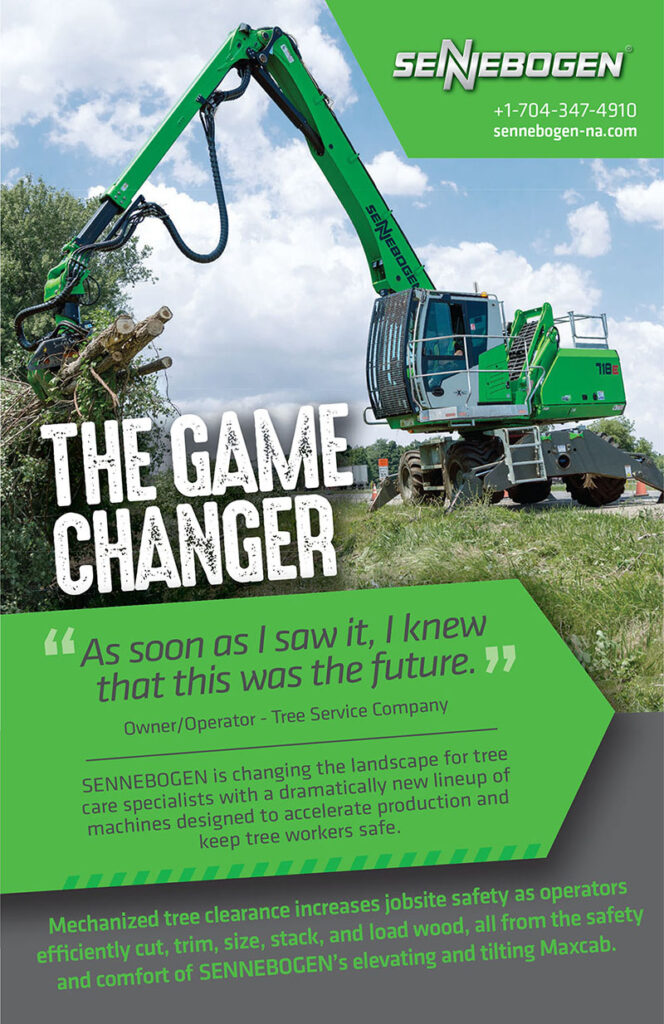
Business growth
Experts all agree that the tree care companies processing a lot of work in a single day are using their knuckle-boom truck as a front-line machine. Whether a company is running a single crew for the entire project or is structured with a removal crew and a chase crew to manage finishing touches and clean-up, efficiency is drastically improved. “It allows a company to completely reinvent their business and make a huge difference in their lives because it can double or triple their income,” says Price. “It’s possible to earn your monthly financing payment in a single day of work.”
Unlike other large equipment, knuckle-booms require skilled operators, and as a result, tree care companies are buying or leasing these units in lieu of renting. “Once you have a knuckle-boom truck in your fleet and are very comfortable operating it, it opens the door to subcontract yourself and the machine to another tree care company you like to work with. Many companies have a lot of success with subcontract work when the parties have a good working relationship,” suggests Creekmore. Alternatively, some projects might require other lifting solutions. For example, the grapple-saw can be removed and replaced with a lifting hook, making it simple to expand your services for non-tree projects such as placing a hot tub on a deck or an air-conditioning unit on top of a building. The skills to operate this kind of machinery are in demand, opening avenues to additional revenue streams.
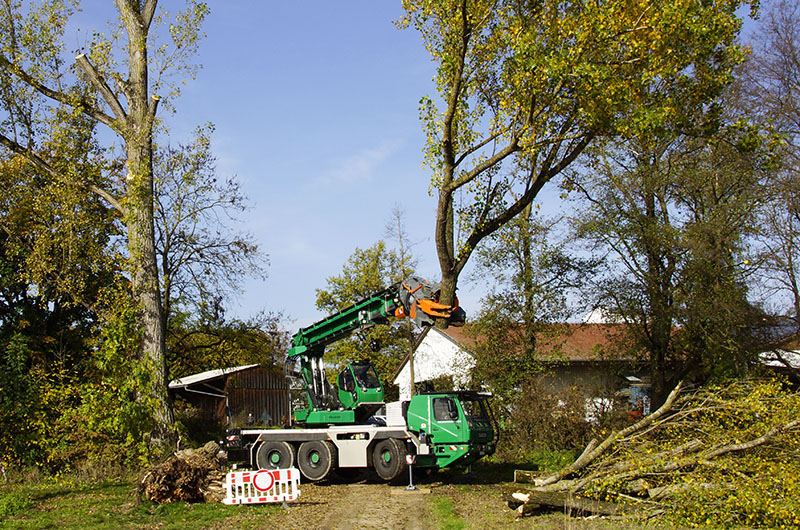
“The investment in this equipment is exactly that, an investment in increased efficiency, increased safety, control of crane availability to their business and access to a wealth of existing owners willing to help them out,” says Smith. “These machines create opportunities to be profitable when arbor-care industry sales are down, but they make profitable tree work seasons even more lucrative.” Doing the required due diligence is essential, and having open discussions with dealers and existing owners helps prospective owners make sound decisions on what will ensure the greatest return on investment.
Things to consider
Knuckle-booms with a grapple attachment are not a one-size-fits-all solution. These machines come in different sizes and configurations, and it’s important to pick the right mix for business needs. “You don’t want to buy a truck that is short and can’t reach the trees you’re giving estimates on, but you also don’t want to buy a 115-foot truck when most days you only need to reach 70 feet,” says Price. “Paying extra money for something you’re not going to use doesn’t make good business sense, and any good dealer will ask targeted questions to help guide you to the right machine.”
Smith echoes this, stating, “A customer located in rural Kansas has much different needs than a customer working in urban parts of New York. We consider several things to help clients select the right knuckle-boom truck.”
The experts shared a few simple questions to help buyers clarify their needs:
• What species of trees are common in your area?
• What is the tallest size tree that you typically remove in your area?
• How many of those do you remove in a year?
• What is access like for most of the tree care jobs you have?
• What is your budget?
“Answering these questions makes for a great starting point to better understand the size machine you need,” emphasizes Creekmore. “Don’t think you need the biggest, tallest, baddest machine on the market. That simply is not the case.”
Some manufacturers offer a single size or version, but with optional variants to customize the equipment. “When deciding which Fällbach variant is best, we can guide customers through selecting appropriate tire width, whether the quick-change system would be useful and adding more counterweights to ensure the equipment is suited to the work they’ll be doing,” says Frühholz. “When special solutions are required, we work with customers to implement them.”
Many owners with smaller knuckle-boom trucks do exceptionally well. The experts suggest that selecting a machine that will do at least 75% of what the business requires will make the most financial sense. Some owners add larger units to their fleet later but will keep the original unit because it gets used every day.
New versus used
Much like purchasing a car or truck, there are pros and cons to new and used knuckle-boom trucks. Buying new comes with significant advantages over buying used, especially for first-time owners. Reasons for this include having the latest technology, zero wear on the product and warranty coverage. On the flip side, disadvantages of new machines include high initial investment, possibly high transport costs and potentially long delivery times.
Investing in a used machine can come with lower purchasing costs and units readily available, making it easier to fill immediate needs. However, used machines can have hidden defects or damage due to misuse by the previous owner which could result in unanticipated downtime, frustration and costly repairs that are no longer covered by the warranty.
New or used, it is helpful to have a team member who is handy with repairs to perform regularly scheduled maintenance to avoid downtime as much as possible.
Training the crew
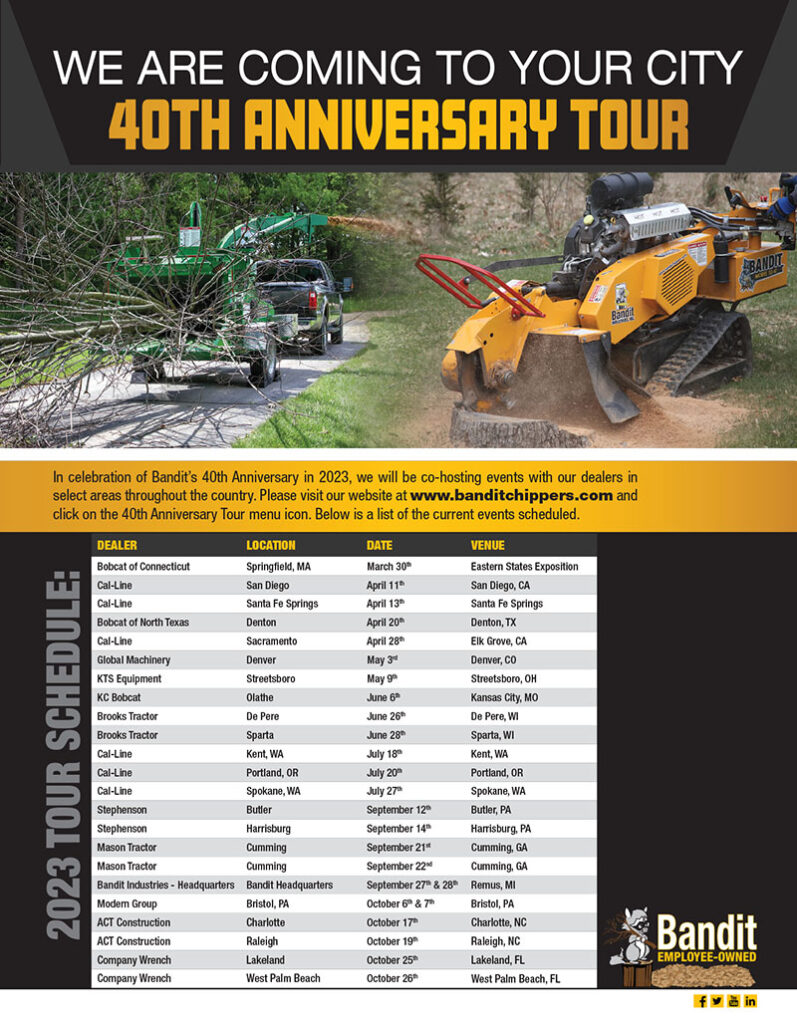
Taking the most experienced climbing arborists on the crew and putting them in charge of the remote enables business owners to leverage those team members’ significant knowledge “The best operators for these trucks are someone who has done the work the manual way and can think critically about how to approach cutting the tree with a remote,” says Price. “Not only does this offer these professionals the chance to extend their careers, it also means they’re going home at the end of the day with energy to have a personal life.” If those senior team members have been climbing for 20-plus years, this is an opportunity to keep them engaged without moving them into sales roles. After all, not everyone with this level of experience is suited to or wants to move into sales.
Introducing new equipment to the fleet does have a learning curve. Smith says, “Knowing customers are familiar with the best practices of use and operation of their machine is not only in the customers’ best interest, but it is also in our best interest because training reduces accidental damage of the machine, resulting in the most uptime possible.” When purchasing a new piece of equipment, two to three days of training with a brand expert is standard. This top-to-bottom orientation is designed to ensure users are familiar with the machine and how to operate it in a variety of scenarios.
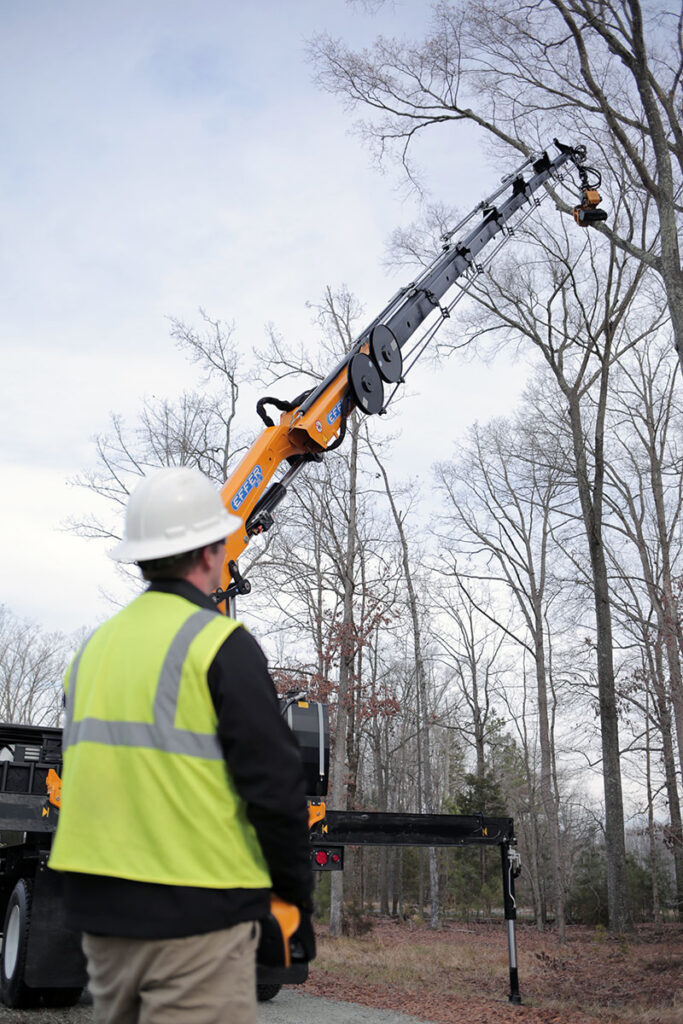
Cost consideration
Dealers may be able to connect buyers with current owners to ask questions and explore the financial and business implications of adding a knuckle-boom to the fleet—it’s always worth asking for a list of contacts. “When customers are doing their homework, talking to other owners and seeing a grapple-saw operated by an experienced crew often results in buyers being blown away by how safe and efficient these machines can make the day-to-day jobs. In nearly every case, owners tell me this single machine was the best thing they have done for their business,” says Creekmore.
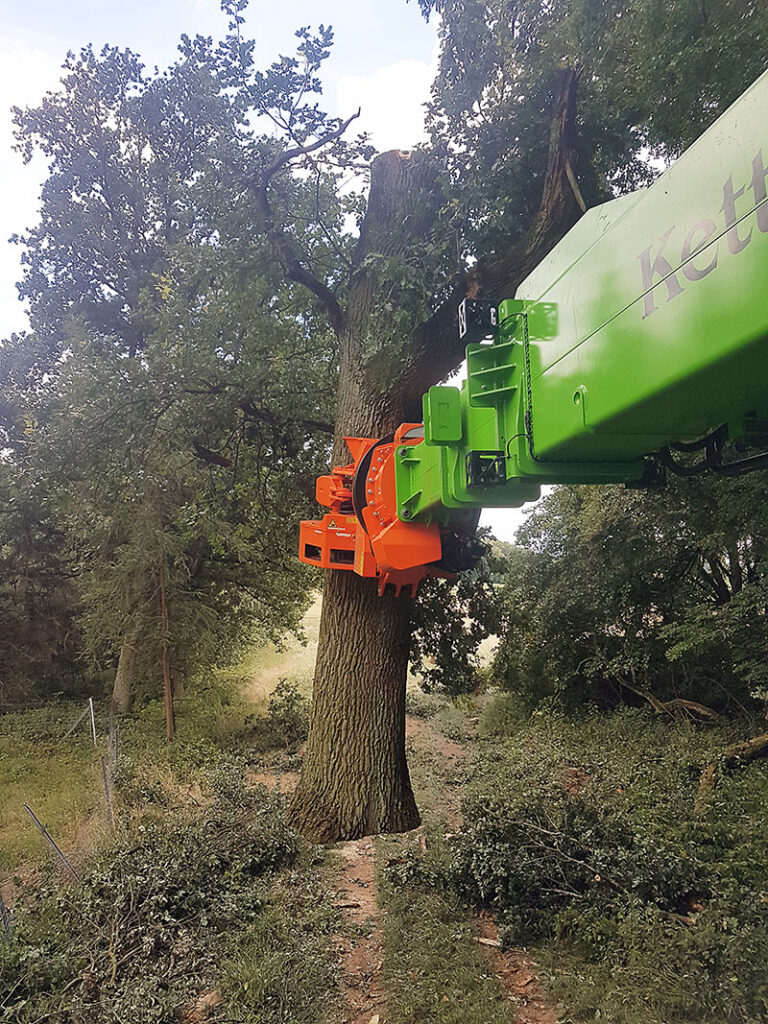
“When grapple-saws were first introduced to the market, the companies that invested early on are true pioneers,” says Price. Today, those companies are making money, and there are plenty of owners who can help those considering adding this machine to their fleet determine if it is a good investment. “People are initially surprised by price. Most have never spent that much for a piece of new equipment. It’s a big decision,” says Price. For smaller family businesses, this could mean cutting back in other areas to support a $300,000-$500,000 purchase. “When considering the overall purchase price of the unit, that number can be intimidating, however when we can explain the breakdown in the cost and calculate the savings gained elsewhere within their business, the investment quickly makes sense,” says Smith. “These packages are more affordable than they might have originally thought.”

Financing Knuckle-Boom Trucks
By JoAnn Cucciarre
Knuckle-boom trucks are one the most powerful and effective pieces of equipment used to collect bulky waste, including brush, trees, leaves, shrubs, logs, stumps, branches and more. While their usefulness is at an all-time high, so is their cost. So, when purchasing a new grapple truck, expect a hefty price tag.
However, a dependable, late-model, used truck can provide similar options and features as a new one for a significantly lower price. Keep in mind, when looking up the NADA value on a used unit, it will be difficult to find a published value in line with the actual worth, since the back-end knuckle-boom is worth more than the truck it’s on.
Because of their unique valuations, it’s important to work with a finance company that understands the grapple truck and that also offers competitive rates and terms. Financing allows you to manage cash flow seamlessly by spreading out payments over a longer period of time instead of spending large amounts of cash that can be utilized for multiple smaller purchases, used for working capital or saved for emergency purposes.
It’s important for business owners to keep good personal and business credit ratings. Without proven credit worthiness, your ability to purchase and finance the equipment that is needed to operate the business is limited. For companies, finding a suitable and trustworthy funding model is of the utmost importance. Once a relationship is established and you’ve made timely loan payments, you increase the value of your business and the likelihood that you are easily able to borrow again, when needed.
Remember, you are a credit risk to the lender until you prove yourself a trustworthy borrower. So make your payments on time and it’s a win-win for both of you.
Providing financing for businesses coast to coast, Northern Atlantic’s owner, JoAnn Cucciarre, has more than 25 years in the industry. JoAnn takes pride in her relationships and celebrates the success of her customers as she’s seen so many of their businesses grow over the years.
Northern Atlantic Financial, LLC specializes in the arborist industry. They believe in long-term partnerships with customers and their commitment to offering customers the most competitive financing programs available is their utmost priority.
